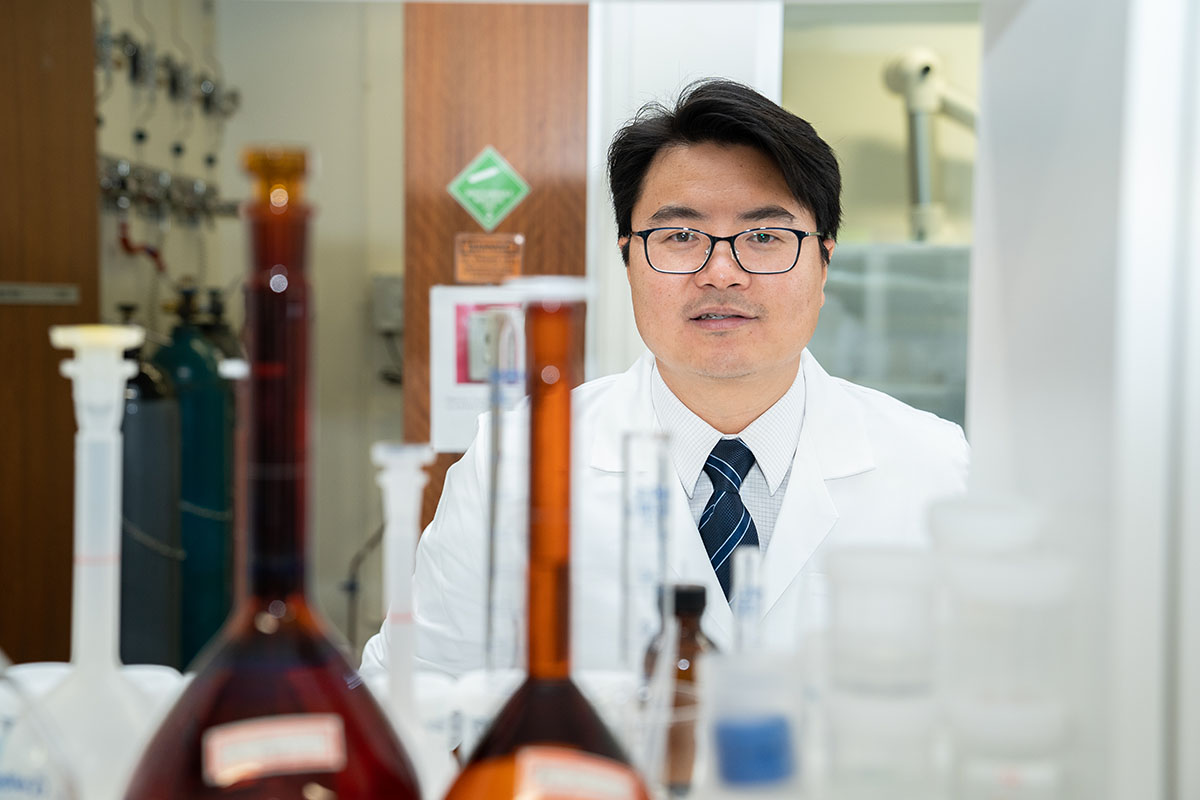Removing microplastics from wastewater
People in developed nations consider their drinking water to be relatively safe, but antibiotics, pharmaceutical medicines and tiny plastic particles, or microplastics, are increasingly slipping into our waterways.
Traditional wastewater treatment does not successfully remove these contaminants. Instead, they end up in long-term contamination of soil, ground water, rivers and oceans.
Recent studies have estimated that Australians could be unwittingly consuming up to a teaspoon of harmful nano- and microplastics every week through bottled and tap water.
Traces of pharmaceuticals such as paracetamol and ibuprofen have even been detected in the surface waters of Antarctica.
Inventing an environmentally friendly water treatment
Edith Cowan University chemical engineering expert and highly cited researcher (Web of Science) Professor Hongqi Sun is leading a team looking for environmentally friendly ways to remove these contaminants without creating new problems by adding other ‘nasties’ like heavy metals to the system.
The challenge is to develop a treatment process that can simultaneously filter out the microplastics from the water, while breaking down the organic pharmaceutical contaminants into harmless compounds.
In recent years, the team had some initial success filtering microplastics with nitrogen laced nanotubes which are thousands of times thinner than a human hair. Shaped like tiny springs, these nanotubes were able to decompose a significant amount of microplastics from a solution in a matter of hours.
By adding manganese, locked deep inside the nanotubes to prevent leaching, the researchers were able to give these tiny springs magnetic properties, which makes it much easier to remove them from the environment.
The nanotubes were effective in the laboratory, but attempts to ramp up the technology for large-scale applications working with our water supply, have not yet been successful.
Next gen reactors are coming
Professor Sun and his team are now designing new materials that can be fabricated to build next generation reactors for complex streams of environmental rehabilitation in the future.
They are investigating the potential of advanced graphene-based hydrogel beads with catalytic ultrafiltration membranes that are powered by iron, cobalt or manganese.

“This novel system is inspired by graphene materials and membranes that have been widely used to mop up dyes, solvents and heavy metals in the environment, but we are building a platform that is not only highly efficient in nanostructure, but also has macroscale supports for scale-up,” Professor Sun said.
“The graphene beads will be used as a barrier along a flat or tubular membrane, like a packed-bed reactor. They will simultaneously break down organic pharmaceutical compounds by chemical degradation and separate out microplastics by membrane technology from the system.”
Professor Sun’s team will complete the laboratory work shortly, before moving into field tests for the technology.
